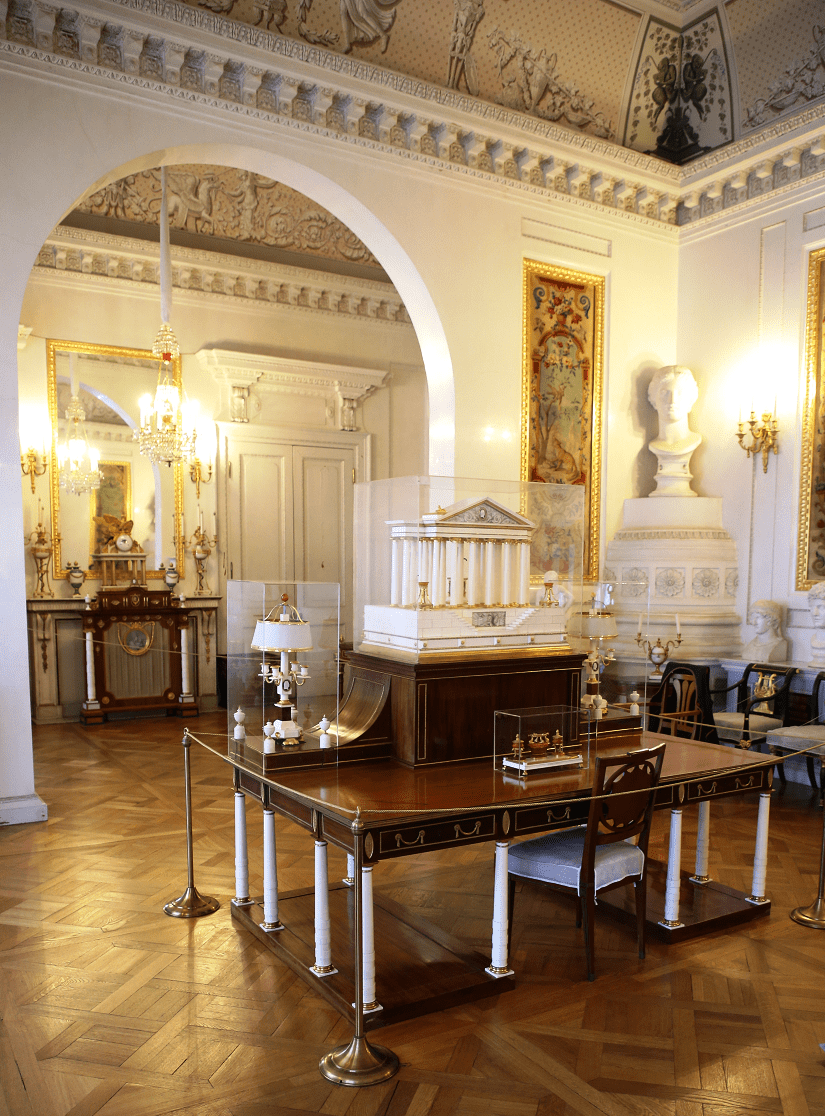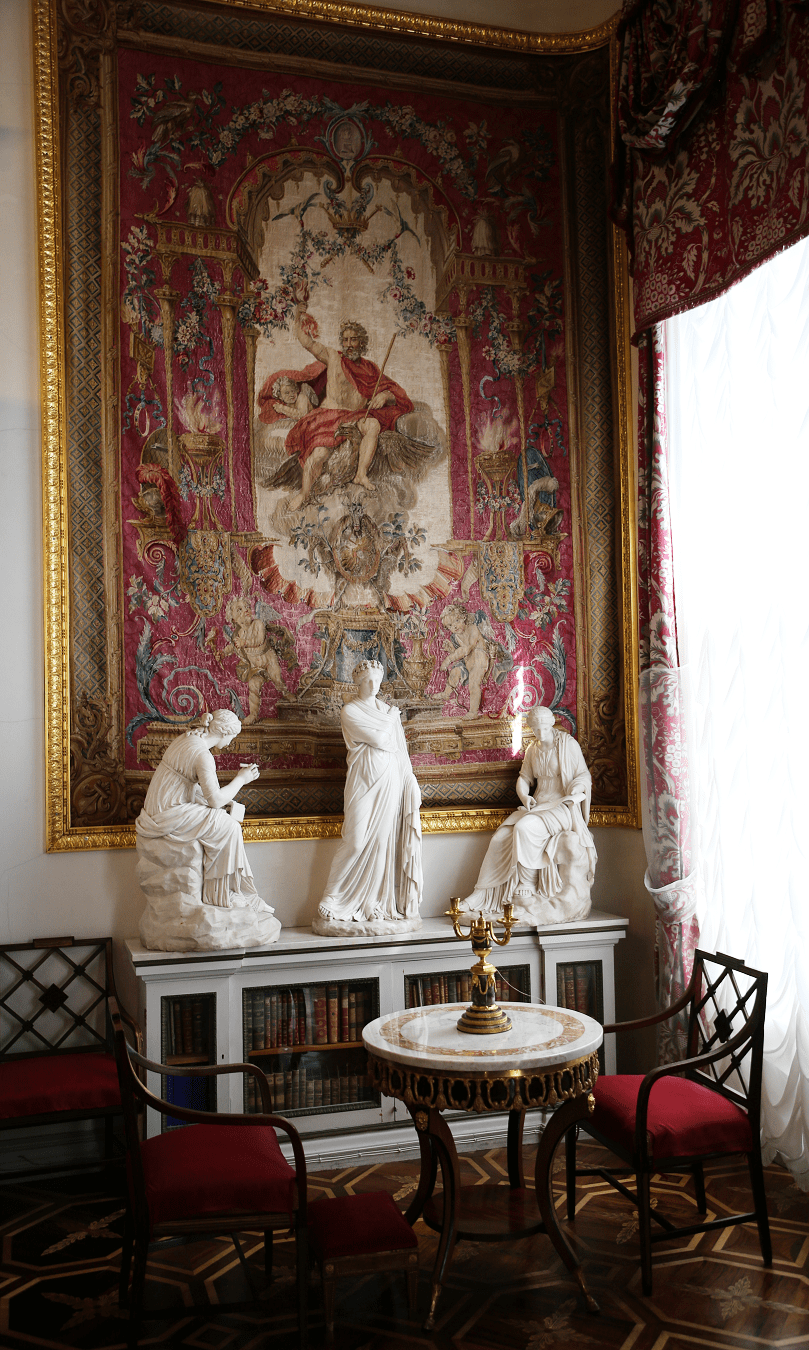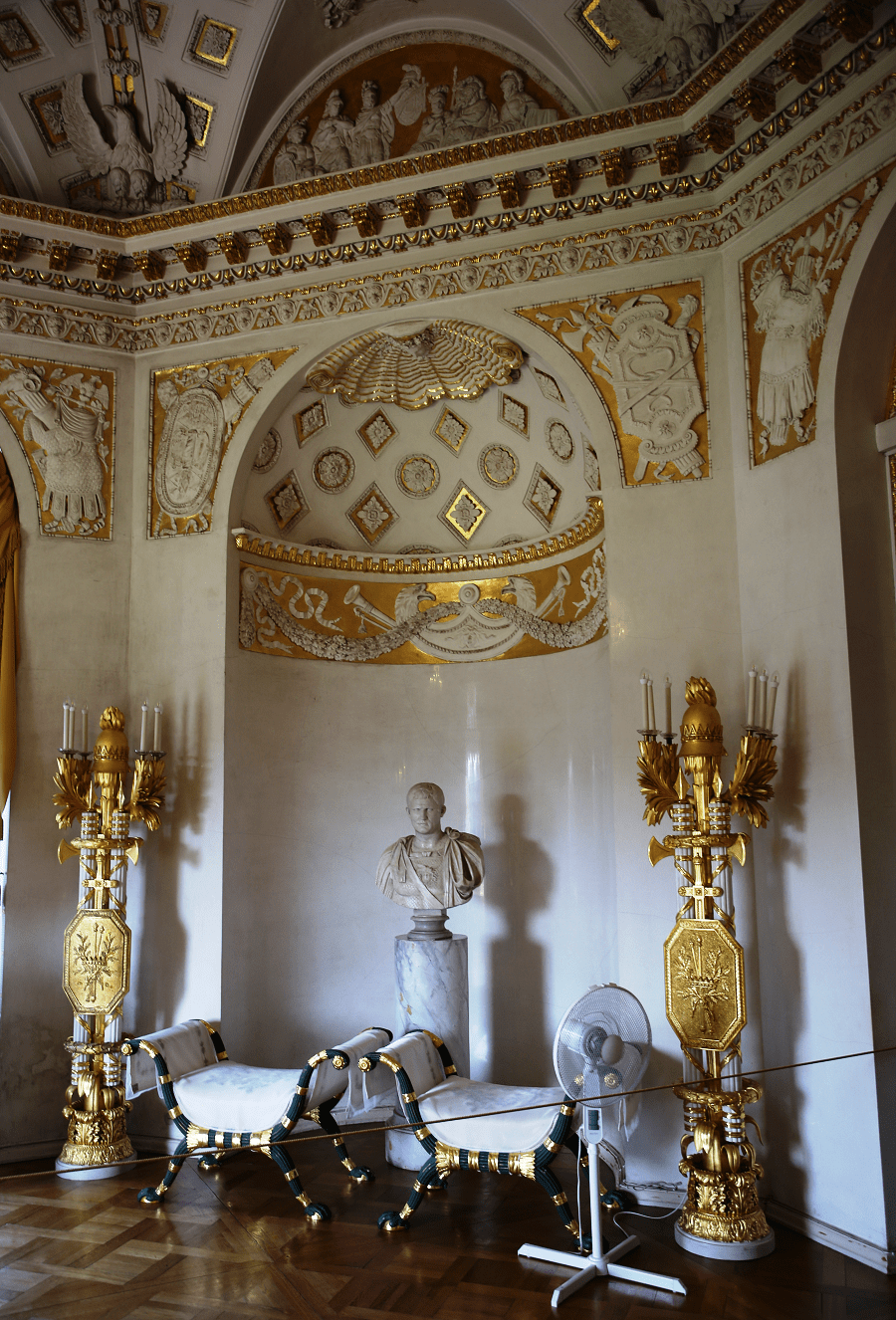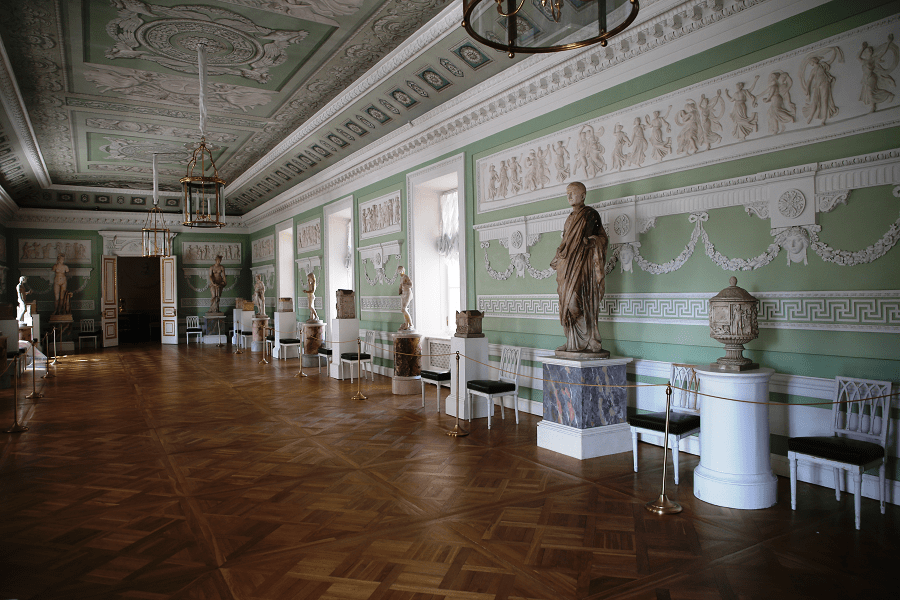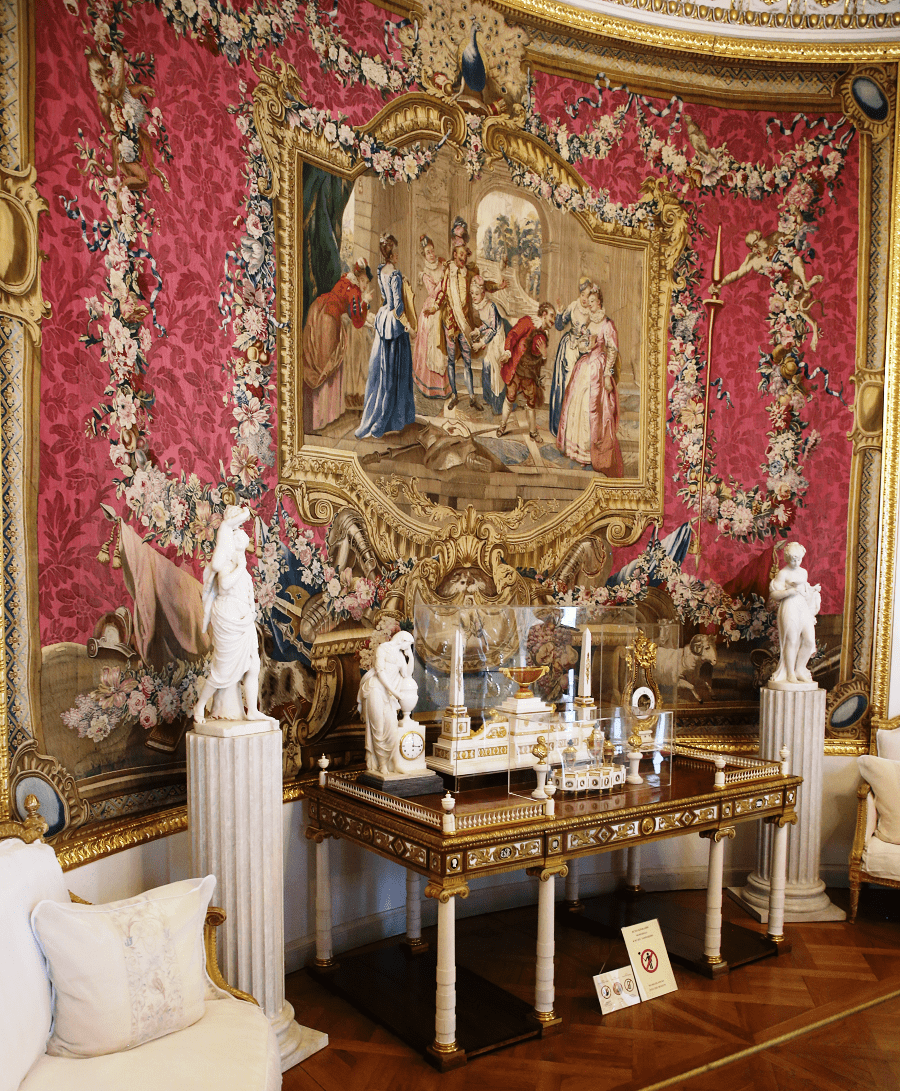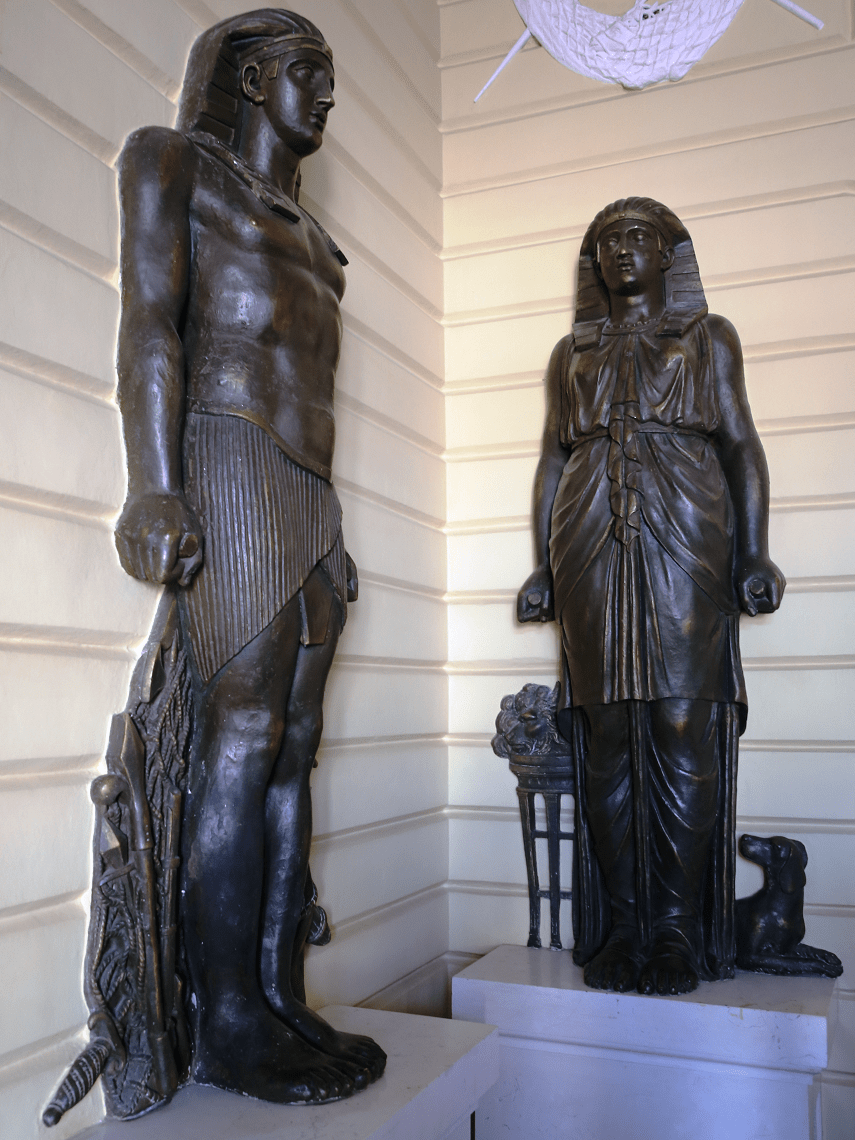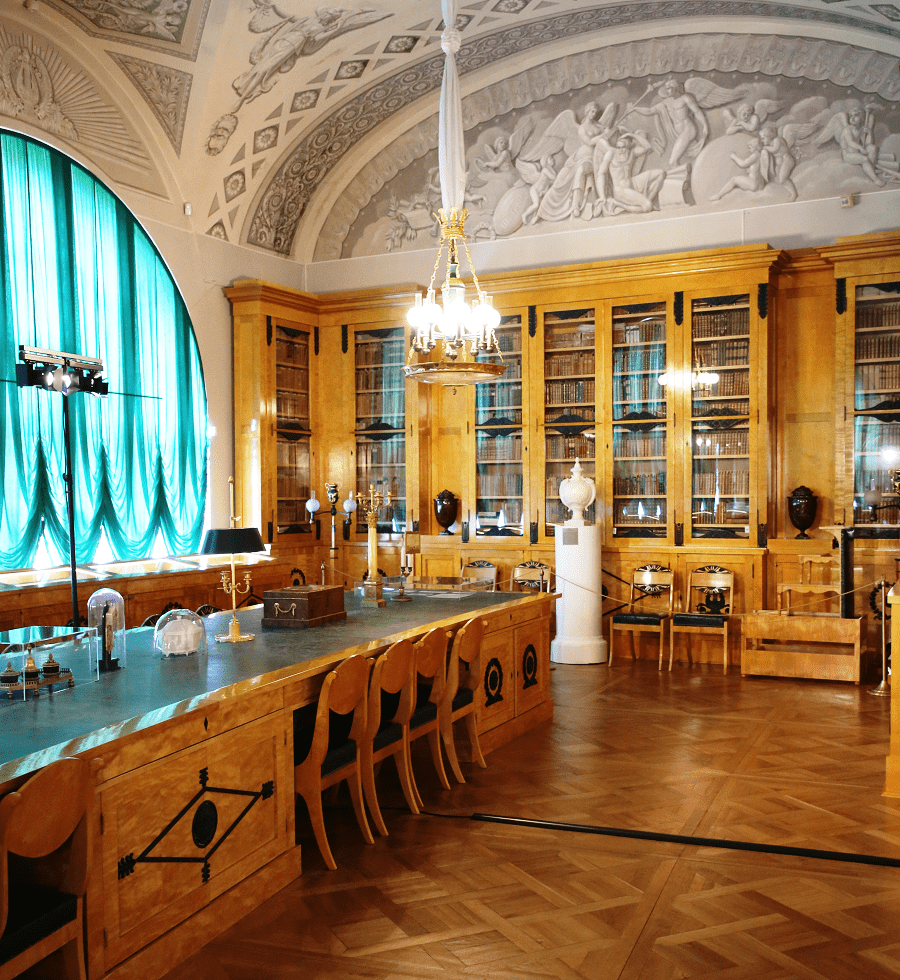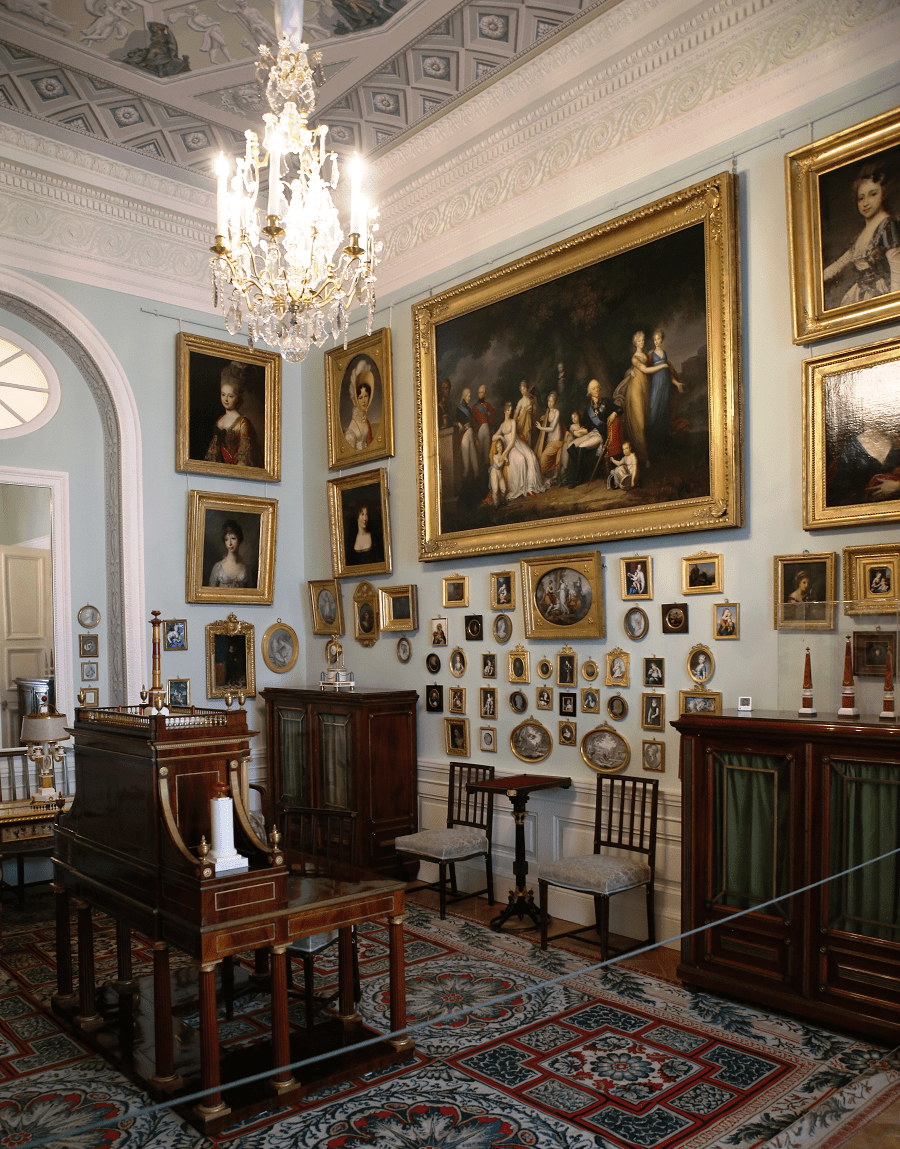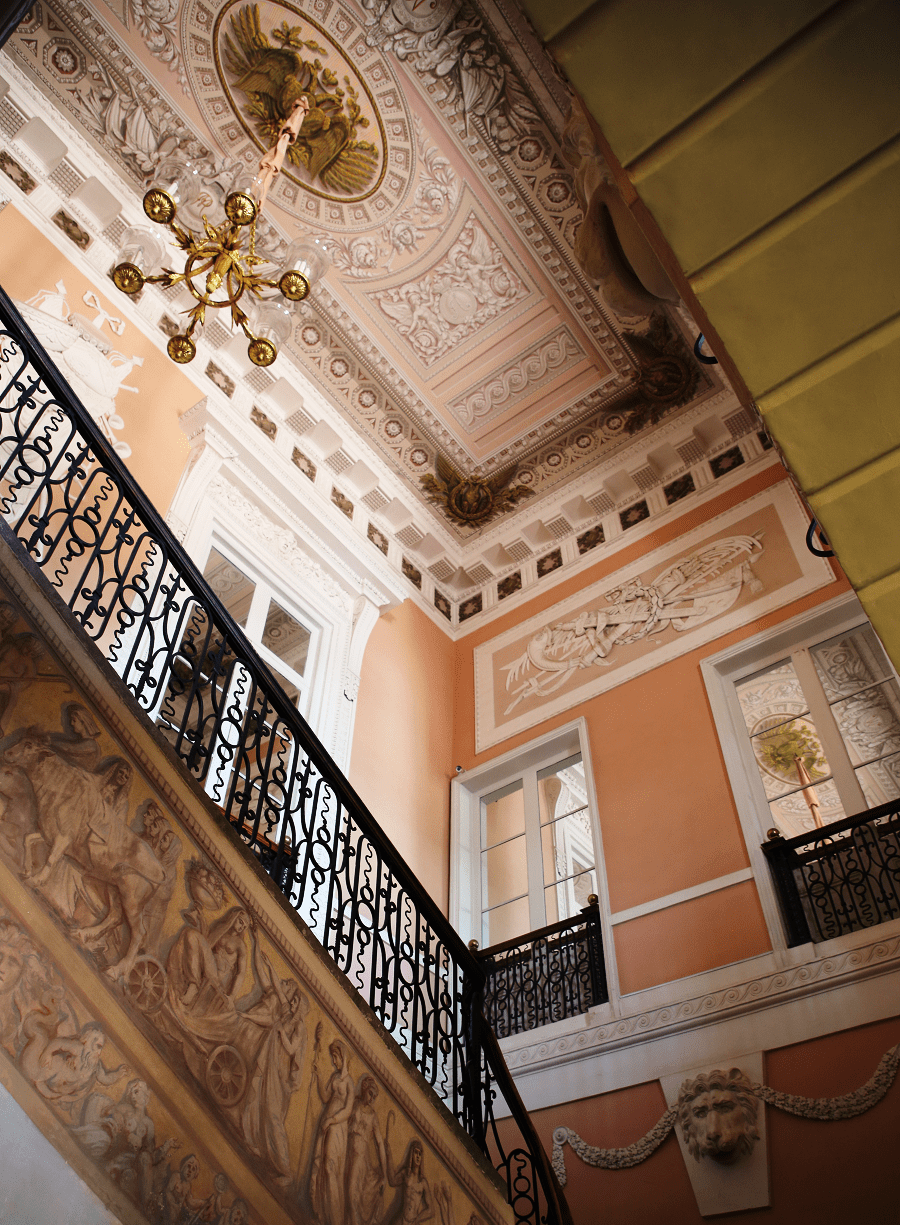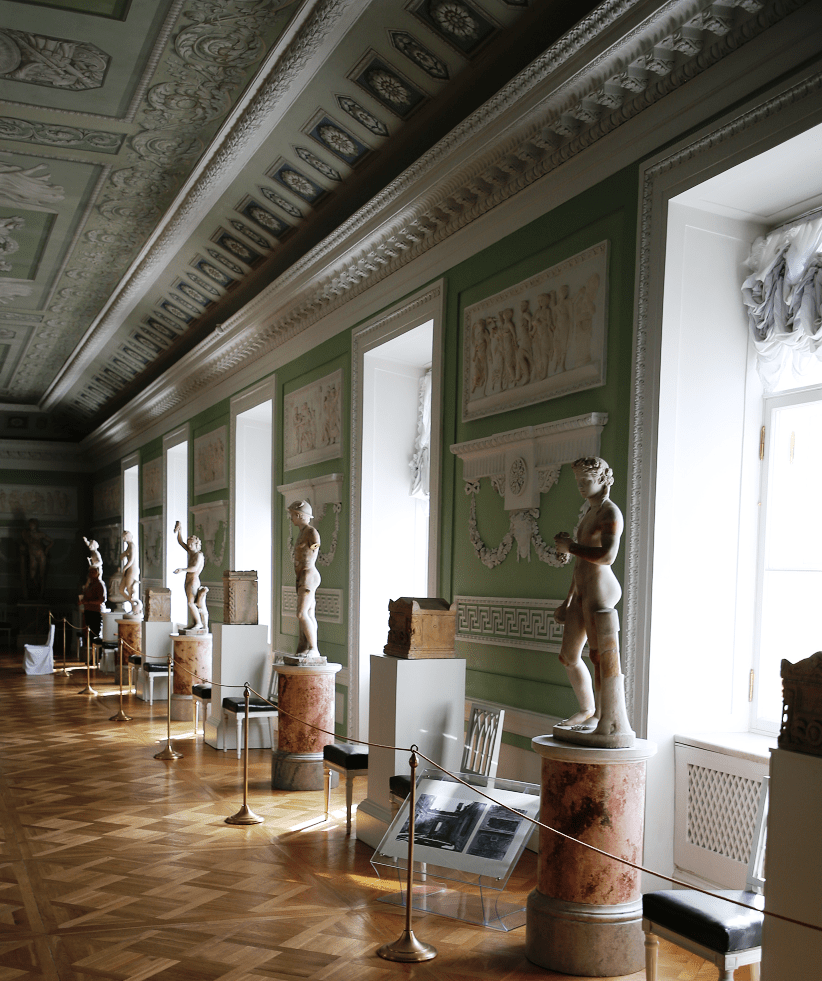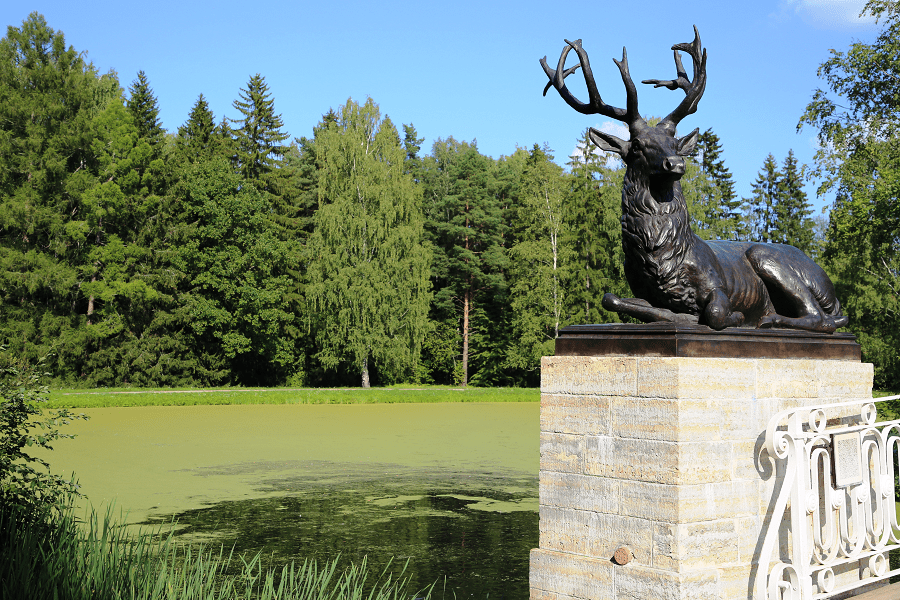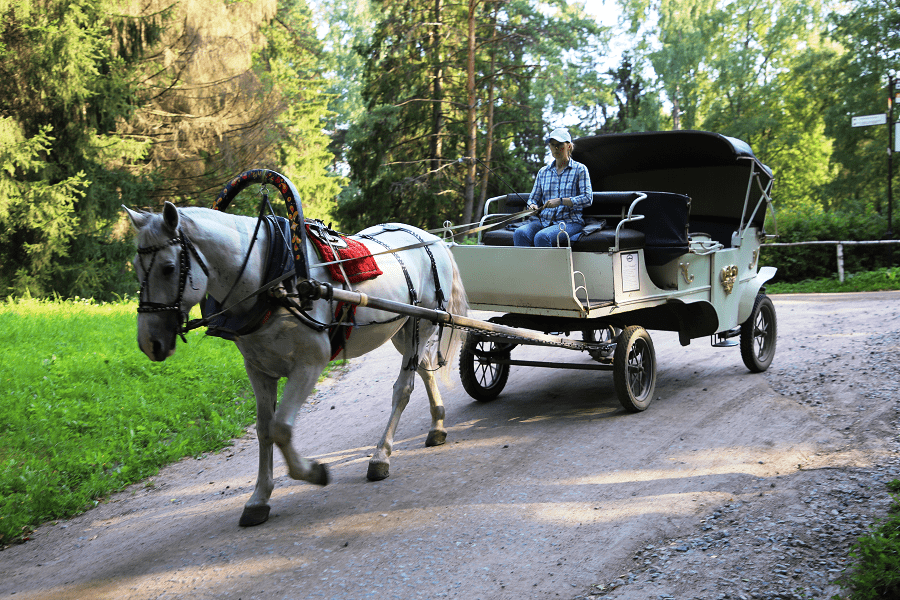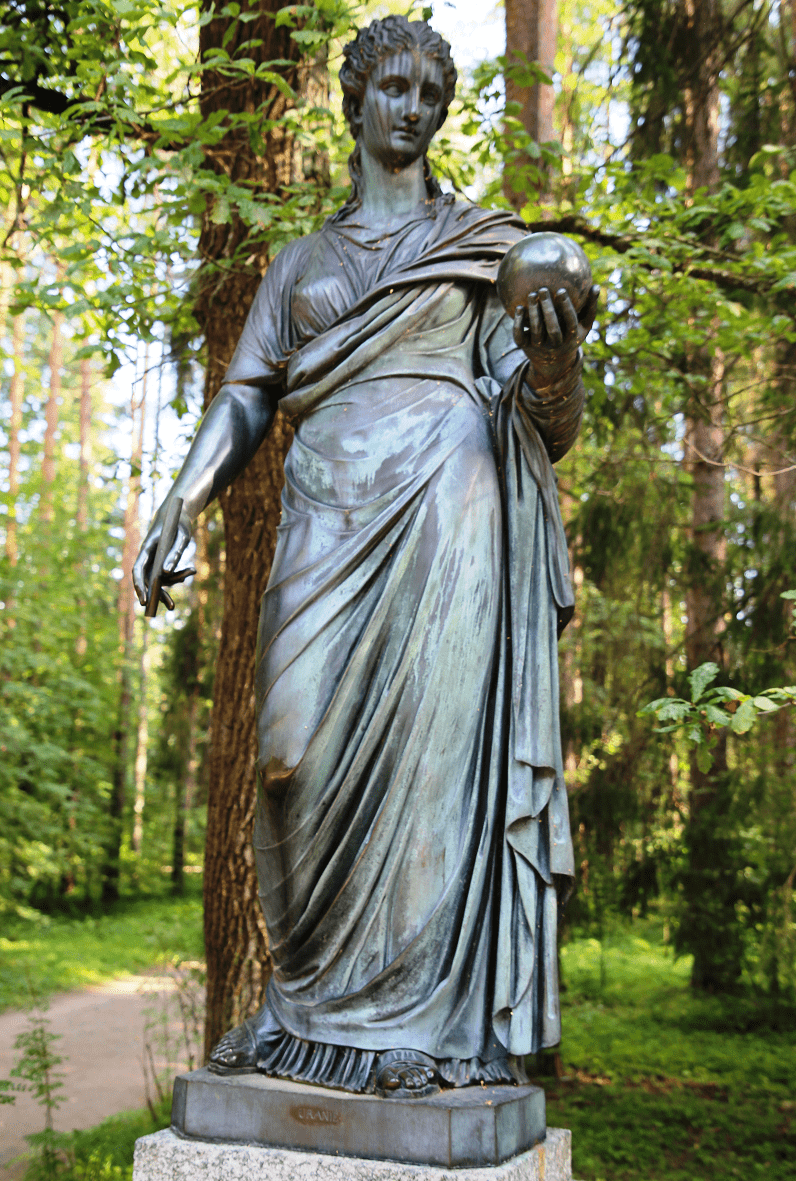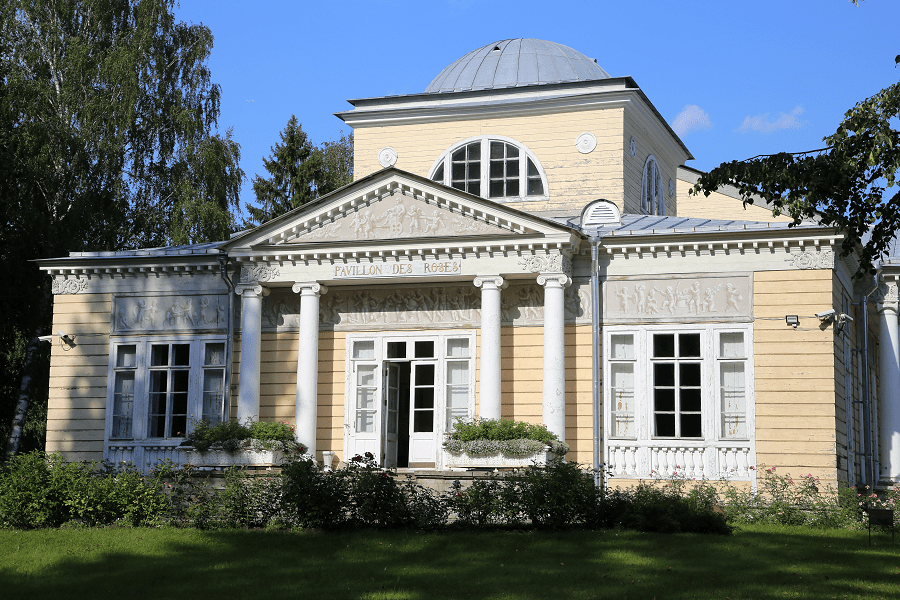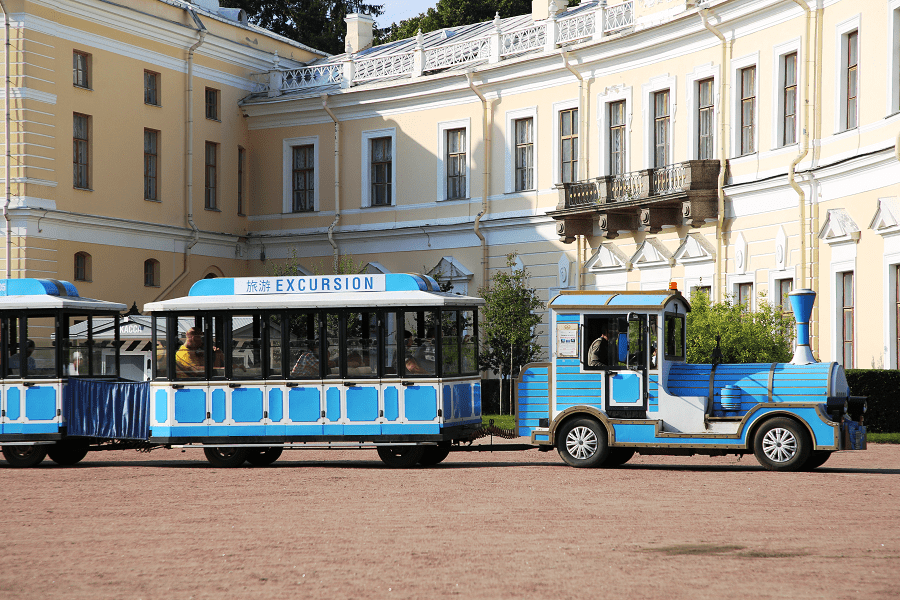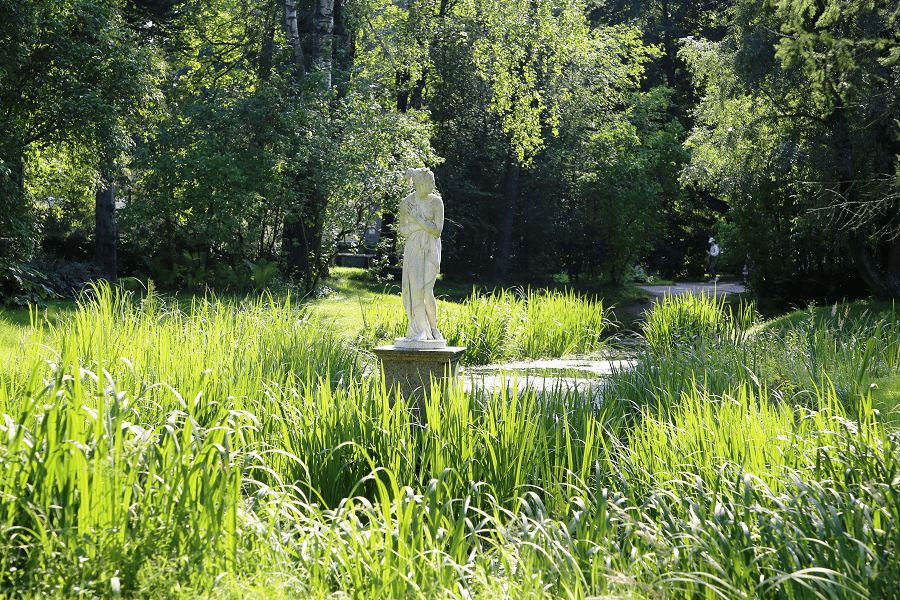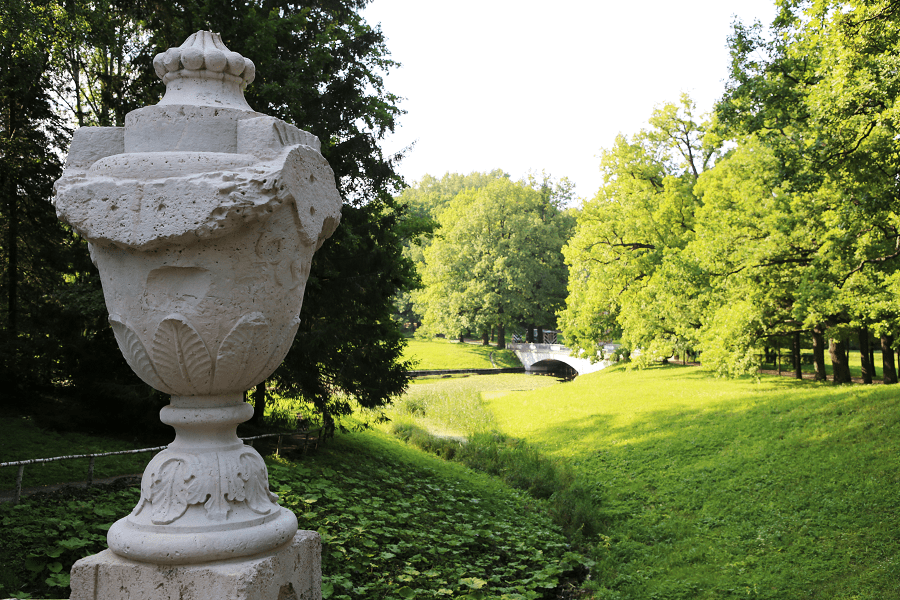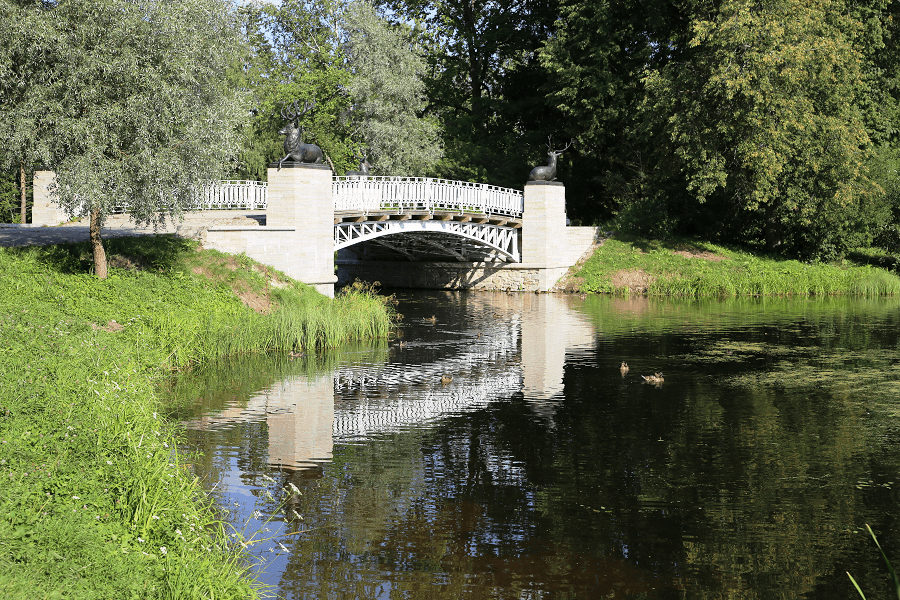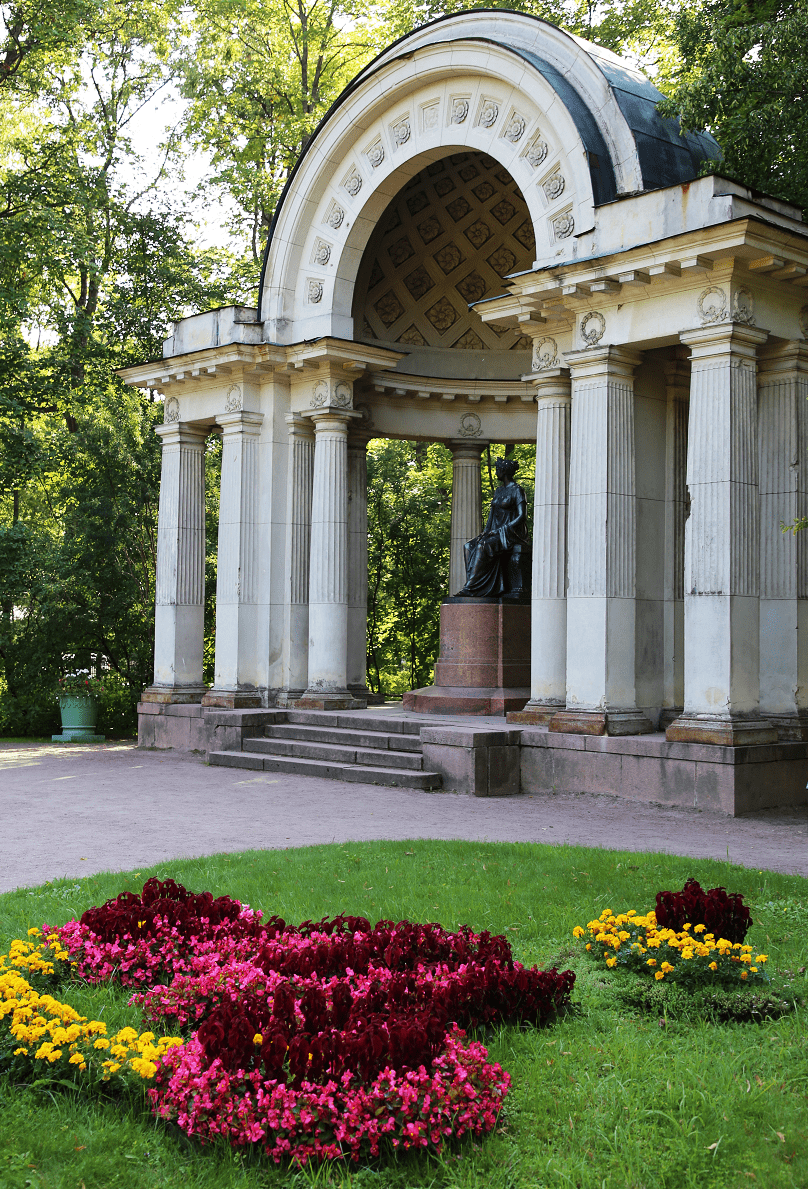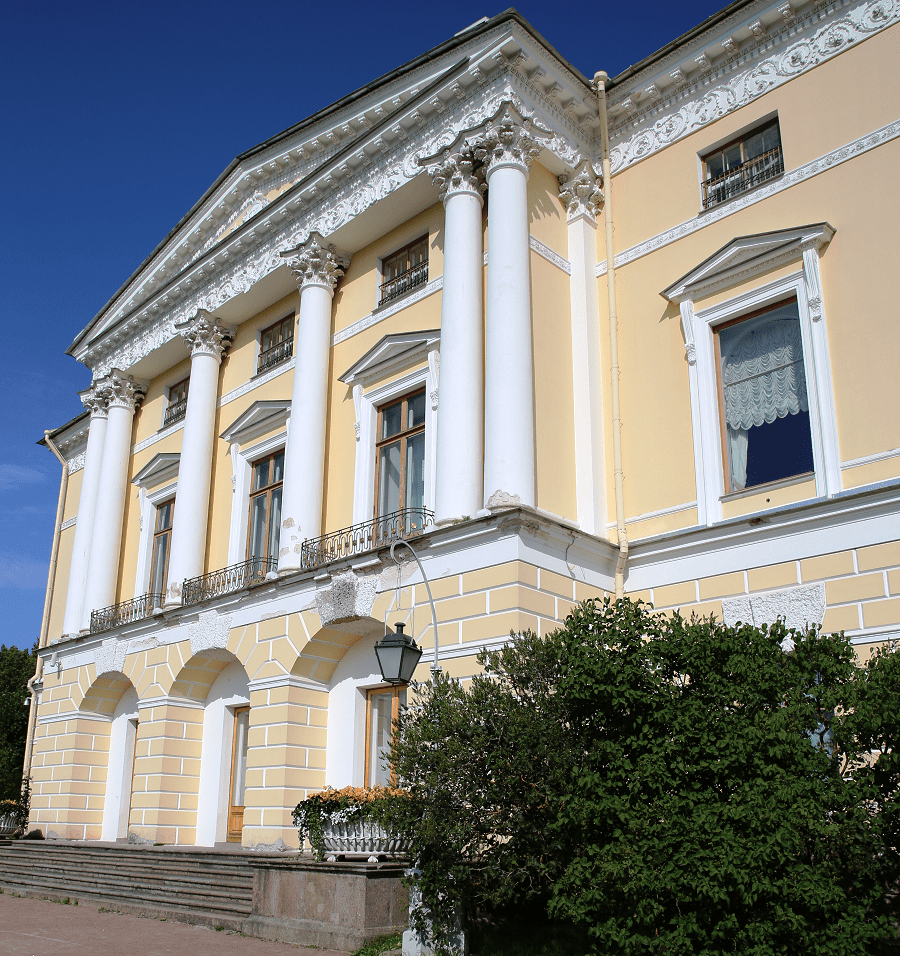Pavlovsk Palace and Park is an 18th-century Russian Imperial residence built by the order of Catherine the Great for her son Grand Duke Paul, in Pavlovsk, near St. Petersburg. After his death, it became the home of his widow, Maria Feodorovna.
The palace and the large English garden surrounding it are now a Russian state museum and public park.
The core of the complex is the Pavlovsk Palace, the summer residence of Emperor Paul I.
Adjacent to the palace is the Pavlovsk Park with an area of about 600 hectares, which stretches along both banks of the Slavyanka River, which makes it one of the largest landscape parks in Europe.
The palace and park ensemble was built over the course of about 50 years by three generations of architects and designers: Charles Cameron, Vincenzo Brenna, Giacomo Quarenghi, Andrey Voronikhin, Carlo Rossi.
Palace
Finishing work in the front halls of the Grand Palace was completed in 1802, but in 1803, due to a malfunction of the chimneys, a fire broke out that destroyed the architecture of the interiors.
Vincenzo Brenna, after the assassination of Emperor Pavel Petrovich on March 12 (24), 1801, left Russia for Germany and took all the drawings with him. Maria Fedorovna entrusted the restoration work to A. N. Voronikhin.
The new palace architect restored the Egyptian vestibule according to the project of Cameron, expanded the gallery of the northern wing, the wall of which was painted by Gonzaga in 1805-1807. In 1807, Voronikhin created one of his best works – the Flashlight study, an interior with a glazed semi-rotunda overlooking his “own garden”.
Paired figures of caryatids are made according to the models of the sculptor V. I. Demut-Malinovsky. The office furniture was also created according to Voronikhin’s drawings.
In 1822-1824, the architect Carlo Rossi added a second floor to the northern gallery to house the library. In 1872, a bronze monument to Paul I was erected on the esplanade in front of the palace (a copy of the monument made by IP Vitali in Gatchina).
In 1970, almost all the halls were open to tourists. Among them is the large Italian Hall (designed by Cameron in 1786, completed by V. Brenna, 1789, restored by Voronikhin). Greek hall with columns of magnificent Corinthian order lined with dark green marble.
Throne room (Dining room) 1797-1798, V. Brenna, sculptures of caryatids based on the models of I. P. Martos and M. I. Kozlovsky, ceiling painting by Pietro di Gottardo Gonzago, Pilaster cabinet (designed by G. Quarenghi in 1800, furniture according to drawings Voronikhin), the Front Bedchamber (1789-1791, V. Brenna), the Boudoir of Maria Feodorovna in the “Pompeian style” (project by C. Cameron, 1784-1788, decoration and painting by J.-B. Scotty based on the drawings of V. Brenna and many other interiors, which are outstanding monuments of architecture and decorative art of Russian classicism.
The interiors of the palace house an extensive collection of paintings, works of arts and crafts: bronzes, porcelain and unique furniture created by Russian craftsmen based on drawings by V. Brenna, A. N. Voronikhin, N. A. Lvov, J.-F. Thomas de Thomon.
The last great St. Petersburg architect to work at Pavlovsk was Carlo Rossi, who in 1824 designed the library, which contained more than twenty thousand books as well as collections of rare coins and butterflies.
He also designed the Corner Salon, where Maria Feodorovna received guests such as the first American Ambassador to Russia, John Quincy Adams, and the Lavender Room, whose walls were made of lilac-colored false marble, matching the lilac flowers outside the windows.
These rooms were furnished with furniture made of native Russian woods, including Karelian birch, poplar and walnut.
Russian Revolution
At the time of the Russian Revolution in 1917, the eldest son of Constantine Constantinovich, Prince Ioann Konstantinovich of Russia, along with his wife, Princess Helen of Serbia, the daughter of King Peter I of Serbia, were living in one of the wings of Pavlovsk, together with his father’s widowed sister Queen Olga of Greece.
As the political situation deteriorated, they left, and the house was left to the care of Alexander Polovotsoff, director of the Art Institute and the Museum of Applied Arts in St. Petersburg.
When Lenin and the Bolsheviks seized power in November 1917, Polovtsoff went to the Winter Palace, found Anatoly Lunacharsky, the Commissar of Enlightenment of the new government, and demanded that Pavlovsk be saved as a museum.
Lunacharsky agreed and named him Commissar Curator of Pavlovsk.
He returned to the Palace and found that a group of revolutionary sailors had searched the Palace for weapons and taken a few sabers, but otherwise everything was in its place.
He hired former soldiers to guard the house, put all the furniture into the main building, made an inventory of all the treasures in the Palace, and successfully resisted demands from various revolutionary committees for dishes, chairs, tables, and all the books from the library.
He was able to persuade Lunacharsky himself to come to Pavlovsk.
After Lunacharsky’s visit, Pavlovsk was officially confiscated, but turned into a museum, open to the public two or three days a week.
Having succeeded in saving the Palace, Polovtsoff took family and belongings and slipped across the border to Finland and moved to Paris.
Park
The park was conceived by the Scottish architect Charles Cameron as a classic English landscape garden, an idealized landscape filled with picturesque pieces of classical architecture, designed to surprise and please the viewer.
Like the English landscape garden, it took much its inspiration from the romanticized landscape paintings of Claude Lorrain and Hubert Robert.
The gallery of Pavlovsk has twelve landscape paintings by Hubert Robert that were commissioned by Maria Feodorovna.
Its inspiration lay not in England but in continental gardens that Maria Feodorovna and her husband had seen in a tour of western Europe in 1782, during which they travelled incognito as the “Count and Countess du Nord”.
They visited her family’s park at Württemberg, where Maria Feodorovna had grown up, and were impressed by the Petit Trianon in the grounds of the Palace of Versailles in France.
The park includes seven landscape areas: Prydvortsovy, Slavyanka River Valley, Big Star with Ponds Valley, Old Sylvia, New Sylvia, Front Field and White Birch.
The center of the composition of the park is the Pavlovsk Palace.
The decoration of the park are pavilions of various nature: classic (Temple of Friendship, Apollo Colonnade, Aviary, Cold Bath, Round Hall, Pink Pavilion); pastoral (Dairy, Peel-tower), memorial (Monument to parents, Mausoleum of the benefactor spouse), as well as bridges over Slavyanka, marble and bronze sculpture.
Architects Charles Cameron, Vincenzo Brenna, Pietro Gonzago, Andrei Voronikhin, Karl Rossi, Andrei Stackenschneider took part in the creation of the park, palace and pavilions.
The Pavlovsk Palace and Park Ensemble is an object of cultural heritage of federal significance.
Working days and tickets
Pavlovsk park is open from April 01 to April 30. From 07:00 to 21:00 admission is free (excluding weekends and public holidays)
On weekends and public holidays:
from 07:00 to 10:00 and from 17:00 to 21:00 admission is free; from 10:00 to 17:00 entrance fee.
From May 01 to August 31, Pavlovsky Park is open to the public daily:
from 07:00 to 09:00 and from 21:00 to 23:00 admission is free; from 09:00 to 21:00 entrance fee.
The park pavilions are open only in the summer.
Pavlovsk Palace is closed to the public on December 31 and January 01. From January 02 to January 09, the Pavlovsk Palace is open.
Open for visiting from 10:00 to 18:00.
The ticket office on the Parade Square is open from 10:00 to 17:00.
The entrance to the Pavlovsk Palace closes at 17:15.
Ceremonial halls of the palace (II floor) and Living rooms (I floor): adults, students, students over 16 years old – 600 rubles.
How to get to the State Museum Reserve “Pavlovsk”?
Address: St. Petersburg, Pavlovsk, Sadovaya st., 20.
By train:
from Vitebsky railway station to the railway station “Pavlovsk” (Pavlovsky railway station)
from the railway station “Kupchino” to the railway station “Pavlovsk” (Pavlovsky railway station).
By bus and fixed-route taxis:
from Moskovskaya metro station: No. 545 to Pavlovsky railway station
from Zvyozdnaya metro station: No. 363 to Pavlovsky station, as well as by bus No. 179 to Pavlovsky station
from the Kupchino metro station: No. 286 to Pavlovsky Palace, No. 545A to Pavlovsky Station, No. 521 to Pavlovsky Palace.
From the Pavlovsky railway station to the Pavlovsky Palace you can drive:
on buses No. 370, 372, 375А, 383, 493
by fixed-route taxis No. 286, 299, 521.






